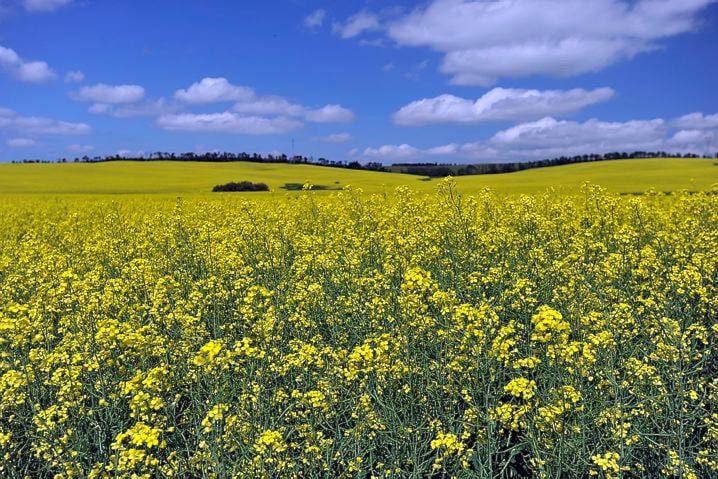It’s early in the crop year, but the term “bumper” remains a possibility.
The most recent provincial crop report, prepared by Agriculture Financial Services Corp., said conditions across Alberta are well above five-year averages. It rated 85 per cent of crops as being in good or excellent condition.
The assessment for Central Alberta is somewhat lower, with 76 per cent of crops scoring good or excellent. Excessive moisture, especially west of Hwy 2, was cited as the reason for the difference.
“Certainly the west part has had a little more than they really want,” confirmed Harry Brook, a crop specialist at Alberta Agriculture and Rural Development’s Ag-Info Centre in Stettler.
But, he added, moisture levels are generally good. A farmer east of Stettler even told Brook recently that he’d welcome some rain.
In both Central Alberta and the province as a whole, crop development is ahead of last year’s pace and the five-year average. That’s despite a late winter.
“Although we seemed to start a little later this year than we normally do, we’ve actually had warmer-than-average weather,” explained Brook
A few hot days accelerated crop growth, he said, and there haven’t been sustained periods of wet and cold.
However, the moist and humid conditions are raising concerns about disease, said Brook.
“That, coupled with the fact we have a very tight rotation in Central Alberta — a lot of producers using a wheat-canola rotation — disease levels have been climbing the last few years.
“My concern is the more you keep having a tight rotation, the greater your risk of something coming along that will just side-swipe you.”
Last year, for instance, aster yellows hit canola yields unexpectedly hard.
Brook urges producers to monitor their fields closely for disease and pests.
Last year, Canadian farmers benefitted from crop failures in the United States and other countries. But with many of the big producing areas of the U.S. escaping drought conditions this year, the expectation is production will be high.
“If you look at the futures market, there’s very heavy downward pressure on the new crop prices,” said Brook. “They’re anticipating a big crop this year, and that’s going to bring crop prices down significantly.”
While painful for crop farmers, that would help livestock producers, who last year were hurt by high feed costs.
hrichards@www.reddeeradvocate.com
